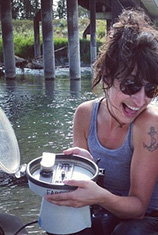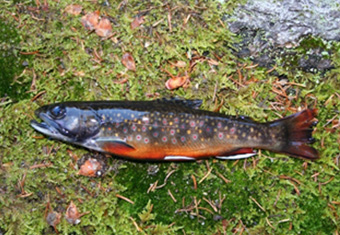

Abstract
With increasing frequency, barriers such as dams are being removed from rivers and streams to improve watershed connectivity, increase biodiversity, and preserve ecological integrity. While barrier removal allows animals to move more freely in freshwater systems, there may be unintended disease consequences related to pathogen dynamics and host immune competence. This is of particular importance in the context of climate change because warm water can increase the disease susceptibility in fish. Many dams have been in place for decades, meaning fish populations have been physically separated for generations; this isolation can result in a loss of genetic immune factors that help recognize foreign pathogens. An evolutionary “arms race” between host immunity and pathogen infectivitycan also take place, resulting in changes to both host and pathogen genomes. When a dam is removed, previously isolated fish populations can mix freely, but so can their bacteria, viruses, and other infectious agents. If a host’s immune system cannot recognize and defend against these pathogens, transmission and disease development could negatively impact individual size and survival, decrease population productivity, and alter future disease resistance.Given that many watersheds are warming, pathogen transmission and disease dynamics associated with barrier removal must be evaluated within a temperature context.
I will develop population forecast models that comprise disease-associated outcomes of improved watershed connectivity that will aid managers in making strategic decisions about the timing and location of barrier removals. Iwill start and end my project by bringing together stakeholders and managers to identify perspectives related to watershed connectivity, climate change, and disease concerns for wild brook trout populations. I will compare genetic immune factors (major histocompatibility complex polymorphism) and infectious agent community composition among isolated and connected brook trout sub-populations in a fragmented watershed. I will then use cohabitation experiments that simulate barrier removal to measure transmission efficiency within and among brook trout sub-populations at cool and warm temperatures. My results will be used to parameterize population forecast models that predict brook trout productivity depending on barrier removal, pathogen diversity, genetic immune competence, and projected stream temperatures. I will incorporate my findings into decision-making tools and frameworks that help determine when, where, and how barriers should be removed to maximize the effectiveness of watershed conservation initiatives. The results of this effort will also be examined in a broader context of ecosystem connectivity, informing hypotheses at different spatial scales and across habitat types to identify management considerations and conservation initiatives that merit disease-relevant research.
Website: amyteffer.com
Follow Amy on Twitter: @tefferfish
